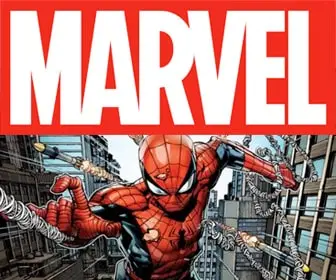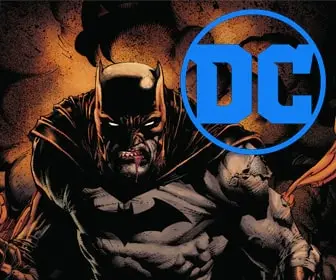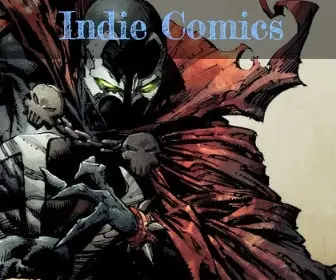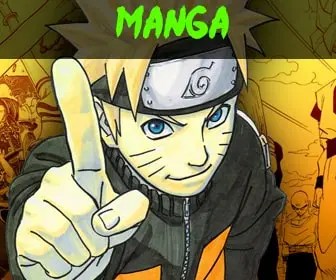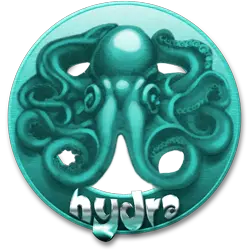
The Marvelous Life of Stan Lee: How He Transformed Comic Books and Popular Culture
Stan Lee was an American comic book writer, editor, and publisher who became one of the most iconic figures in the comic book industry and pop culture at large. Born Stanley Martin Lieber in 1922, he began his career in comics at Timely Publications, which would later evolve into Marvel Comics. Alongside artists like Jack Kirby and Steve Ditko, Lee co-created a multitude of legendary characters such as Spider-Man, the X-Men, Iron Man, Thor, the Hulk, Black Widow, the Fantastic Four, Black Panther, and many more. His innovative storytelling techniques, like the “Marvel Method,” and his flair for character development revolutionized the medium, transforming it into a tool for exploring complex themes of morality, identity, and social justice. Through the Marvel Cinematic Universe and other adaptations, Lee’s creations reached an even wider audience, cementing his legacy as a visionary who forever changed the way we view heroes and storytelling.
Early Life
Stan Lee was born Stanley Martin Lieber on December 28, 1922, in New York City, to Romanian-Jewish immigrants Celia and Jack Lieber. The family faced economic hardships, especially during the Great Depression, which greatly influenced Lee’s work ethic and ambitions. He grew up in a small apartment in the Washington Heights neighborhood of Manhattan, sharing a bedroom with his younger brother, Larry Lieber, who would also become involved in the comic book industry. The Lieber family’s struggles and the melting pot culture of New York City deeply informed Stan Lee’s understanding of human resilience and diversity, qualities that later became defining elements in the characters and stories he created.
From a young age, Stan Lee was enamored with books, movies, and storytelling, finding escape and inspiration in the worlds of adventure, mystery, and heroism. He was an avid reader, consuming everything from Shakespeare and Mark Twain to pulp magazines and classic literature. Lee also cited the swashbuckling films of Errol Flynn as a significant influence on his conception of heroism and adventure. Even as a child, he had aspirations of one day writing the “Great American Novel,” a dream that fueled his creative spirit. While he didn’t pen a traditional novel, his early influences undeniably shaped his storytelling craft and imagination, laying the groundwork for the mythic and morally complex universe he would later create in the realm of comic books.
Military Service
Stan Lee joined the U.S. Army in 1942 during World War II, serving in the Signal Corps where he repaired communications equipment before transferring to the Training Film Division. There, he worked on writing manuals, training films, and slogans, even cartooning occasionally. His military classification, humorously enough, was “playwright.” The experience broadened his skills in scripting and storytelling, and exposed him to different perspectives that would later enrich his approach to character development and narrative. While his service temporarily interrupted his career in comics, it also provided a formative experience that influenced his ethos of heroism, sacrifice, and the complexities of good versus evil—themes that would become deeply ingrained in the Marvel Universe he helped to create.
Entry into the Comic Book Industry
Stan Lee made his first foray into the world of professional writing and comics at the age of 17 when he landed a job as an assistant at Timely Comics, a division of pulp magazine publisher Martin Goodman’s company. Initially, his duties were menial, ranging from fetching lunch to proofreading and filling inkwells for artists. However, he soon got a chance to showcase his writing skills when he made his comic book debut with a text filler story in “Captain America Comics #3” in 1941, using the pseudonym “Stan Lee.” The alias was initially employed because Lee hoped to reserve his real name for more “respectable” literary work, a plan that changed as he became synonymous with comic book innovation. This early experience would serve as a launching pad for a career that would revolutionize the comic book industry and shape popular culture for decades to come.
Stan Lee cut his teeth on a variety of genres and characters during his early years at Timely Comics, which later became Marvel Comics. Among his early contributions were backup features in titles featuring more established characters like Captain America. He also dabbled in romance, westerns, and horror stories, demonstrating his versatility as a writer. However, his earliest standout work came with the co-creation of the Destroyer, Jack Frost, and Whizzer — characters that may not have had the lasting impact of his later creations but were notable contributions to the Golden Age of Comics. These early endeavors offered Lee the opportunity to hone his craft, experiment with storytelling elements, and lay the groundwork for the imaginative and groundbreaking work that would follow in the subsequent decades.
The Marvel Revolution
The Marvel era, often marked by the release of “Fantastic Four #1” in 1961, signaled a seismic shift in the world of comic books, both in storytelling and character development. Spearheaded by Stan Lee and artist Jack Kirby, Marvel Comics emerged as a creative powerhouse, breaking away from established archetypes and introducing a new kind of hero—flawed, relatable, and human. During this period, Lee, alongside collaborators like Kirby, Steve Ditko, and others, introduced an array of iconic characters such as Spider-Man, the X-Men, Iron Man, and the Hulk. These characters inhabited a shared universe, an innovative concept at the time, where their stories could intersect and influence one another. This interconnected storytelling appealed to both young and mature audiences, revolutionizing the comic book industry and laying the foundation for what would become a multi-billion-dollar entertainment empire spanning comics, movies, and more.
The Marvel Method
The “Marvel Method” was a revolutionary approach to comic book creation pioneered by Stan Lee and his collaborators, most notably artists like Jack Kirby and Steve Ditko. Unlike the traditional full-script method, where a writer would provide a detailed script specifying dialogue, panel layout, and action, the Marvel Method was more collaborative. In this approach, the writer and artist would discuss the story’s general outline, after which the artist would draw the comic based on that discussion. The writer would then add dialogue and narration to the finished art. This gave artists more creative leeway, turning them into co-storytellers rather than mere illustrators.
The impact of the Marvel Method on storytelling and character development was significant. It allowed for more dynamic storytelling, as artists could interpret scenes and characters in their own style, often adding elements not initially envisaged by the writer. This fluidity made characters feel more lifelike and stories more engaging. Additionally, it fostered a sense of teamwork and symbiosis that became a hallmark of Marvel’s creative process. Characters like Spider-Man, the Fantastic Four, and the X-Men emerged as complex, nuanced individuals precisely because of this collaborative synergy.
The Marvel Method also contributed to elevating the comic book form as a whole. By facilitating a more seamless integration between writing and artwork, it led to a more sophisticated narrative and visual language in comics. It showed that comic books could be a medium for artistic expression and complex storytelling, helping to dispel the notion that they were simply “kid stuff.” This innovative method influenced not only Marvel Comics but the broader comic book industry, paving the way for more complex and artistically ambitious works.
Impact on Popular Culture
The Marvel Cinematic Universe (MCU) represents a groundbreaking transition from comics to film, turning a tapestry of interconnected storylines and characters into a multi-billion-dollar entertainment juggernaut. Initially launched with “Iron Man” in 2008, the MCU took the concept of a shared universe—a hallmark of Marvel Comics—to the big screen, allowing characters from separate franchises to interact, much like they did in comic book pages. With a strategic blend of standalone films and crossover events, the MCU not only achieved unprecedented commercial success but also garnered critical acclaim, forever changing the landscape of blockbuster filmmaking. The characters Stan Lee co-created, from Iron Man to Spider-Man, became global icons through these adaptations, and the themes he explored in comics—morality, identity, and the human condition—found a new, expansive platform. The MCU’s rise is a testament to the enduring power of Stan Lee’s vision, proving that the heroes and stories he helped bring to life are as relevant on the silver screen as they are in ink and paper.
Stan Lee’s cameo appearances in Marvel films have become something of a beloved Easter egg for fans, a tradition that started with the earliest adaptations of Marvel properties but became particularly prominent in the Marvel Cinematic Universe (MCU). From a hot dog vendor in “X-Men” (2000) to a FedEx deliveryman in “Captain America: Civil War” (2016), Stan Lee popped up in various guises, often providing comic relief or a moment of fan-service delight. These cameos became so anticipated that audiences would actively look for his brief moments on screen, creating an additional layer of engagement with the films.
Not only did these cameos serve as a charming nod to Lee’s foundational role in creating many of Marvel’s characters and stories, but they also symbolized the interconnectedness of the Marvel Universe, much like the crossover storylines in the comics. In a way, Lee’s appearances functioned as a unifying thread, tying together disparate storylines and characters across movies and even television shows. His cameos reached beyond mere gimmickry; they were a heartfelt tribute to his monumental contributions and a way for both filmmakers and fans to pay homage to the man who had an indelible impact on the world of comics and pop culture. After his passing in 2018, the absence of these cameos became especially poignant, marking the end of an era while underscoring his lasting legacy.
Business Ventures and Controversies
Stan Lee played a complex role in the business aspects of Marvel Comics, particularly during its formative years and its various transformations. Initially serving in editorial roles, he eventually became Marvel’s publisher and later its chairman emeritus. His charismatic presence made him not just the creative face of Marvel but also one of its key business promoters. Lee was instrumental in expanding Marvel’s reach into new markets, including licensing deals, television shows, and eventually movies. He was often the go-to person for interviews and public appearances, effectively serving as Marvel’s most recognizable ambassador to the wider world.
However, Lee’s business role at Marvel was not without controversy, particularly regarding issues of creator rights. Many artists and writers who collaborated with him, most notably Jack Kirby and Steve Ditko, felt they were not adequately credited or compensated for their contributions to iconic characters and storylines. These tensions spotlighted the broader industry issues around intellectual property and revenue-sharing, leading to ongoing debates about the equitable treatment of comic book creators. Critics argue that Lee, given his prominent position, could have done more to address these systemic issues, although the details are often complicated and nuanced.
In his later years, Stan Lee ventured into various projects outside of Marvel. He founded POW! Entertainment, a media production company, through which he explored various storytelling mediums, from digital content to television shows. He also made appearances in non-Marvel films and lent his name to educational initiatives, like the Stan Lee Foundation, aimed at promoting literacy and the arts. Despite facing personal challenges, including legal battles and health issues, Lee remained active in the entertainment and comic book industries almost until his passing in 2018, leaving behind a multifaceted legacy that extends beyond his iconic Marvel creations.
Legacy
Stan Lee passed away on November 12, 2018, at the age of 95, leaving an indelible mark on the worlds of comics, film, and popular culture. His death was the result of complications related to pneumonia, and he was pronounced dead at Cedars-Sinai Medical Center in Los Angeles. The news of his passing reverberated across the globe, eliciting tributes from fans, colleagues, and celebrities who had been touched by his work. His death marked the end of an era for Marvel and the comic book industry as a whole, closing the chapter on a career that spanned over seven decades. The themes and characters he helped to create continue to live on, immortalized in the stories he told and the expansive universe he co-created. Despite controversies and criticisms that marked his life and career, Stan Lee’s influence remains unparalleled, and he is widely celebrated as a pioneering force who forever changed the landscape of storytelling.
Collectors
Much of Stan Lee’s most iconic works are highly sought after by collectors for their significance in the comic book industry and popular culture. Here are five that are often cited:
- “Amazing Fantasy #15” (1962) – This issue marks the first appearance of Spider-Man, one of Stan Lee’s most famous creations, co-created with Steve Ditko. It’s a cornerstone piece for any serious collector.
- “Fantastic Four #1” (1961) – This comic book, created with Jack Kirby, essentially launched the Marvel Universe as it’s known today. It’s considered one of the most important comic books in history.
- “X-Men #1” (1963) – Another collaboration with Jack Kirby, this issue introduced readers to the X-Men, a team of mutants who fight for peaceful coexistence between humans and mutants.
- “The Avengers #1” (1963) – This is another key issue where a team of Marvel heroes (Iron Man, Thor, Hulk, Ant-Man, and Wasp) unite for the first time. It was co-created with Jack Kirby and has become especially valuable in light of the Avengers’ cinematic success.
- “The Amazing Spider-Man #1” (1963) – While Spider-Man debuted in “Amazing Fantasy #15,” his first solo series began with this issue, also created with Steve Ditko. This comic set the stage for many of Spider-Man’s subsequent adventures and is a prized item for collectors.
Denouement
Stan Lee, born Stanley Martin Lieber, was a seminal figure in the comic book world whose impact reverberates across multiple forms of media to this day. Rising from a humble assistant at Timely Comics to become the creative dynamo behind Marvel Comics, redefining the superhero genre by infusing it with human complexity and moral nuance. His collaborative “Marvel Method” of storytelling revolutionized the industry, and his characters leapt from the page to dominate global cinema through the Marvel Cinematic Universe. Despite controversies around creator rights, Lee’s legacy is monumental, shaping not just comics but also film, television, and popular culture at large. His death in 2018 marked the end of an era, but the universes he helped create continue to expand, ensuring that his influence will be felt for generations to come.








